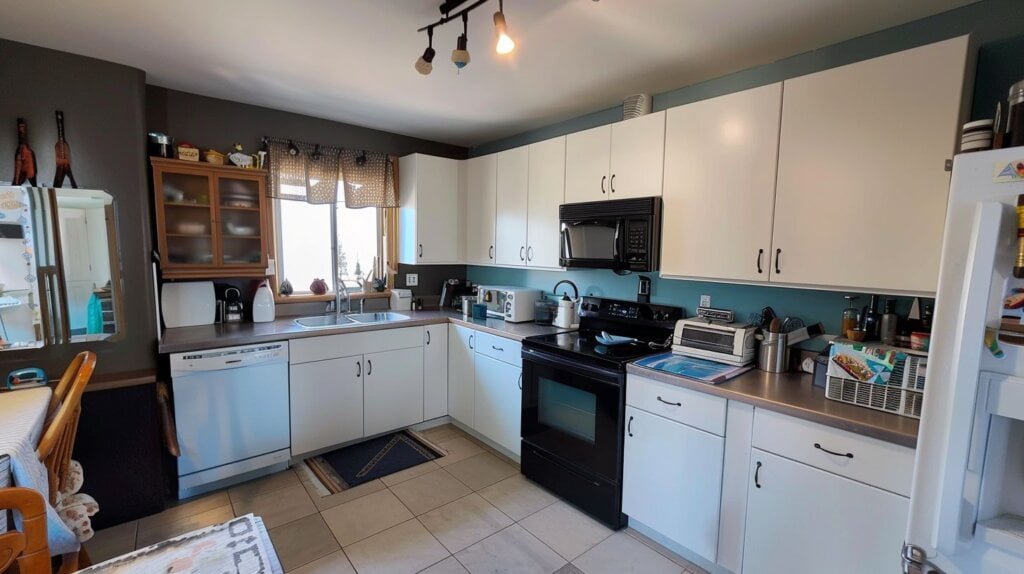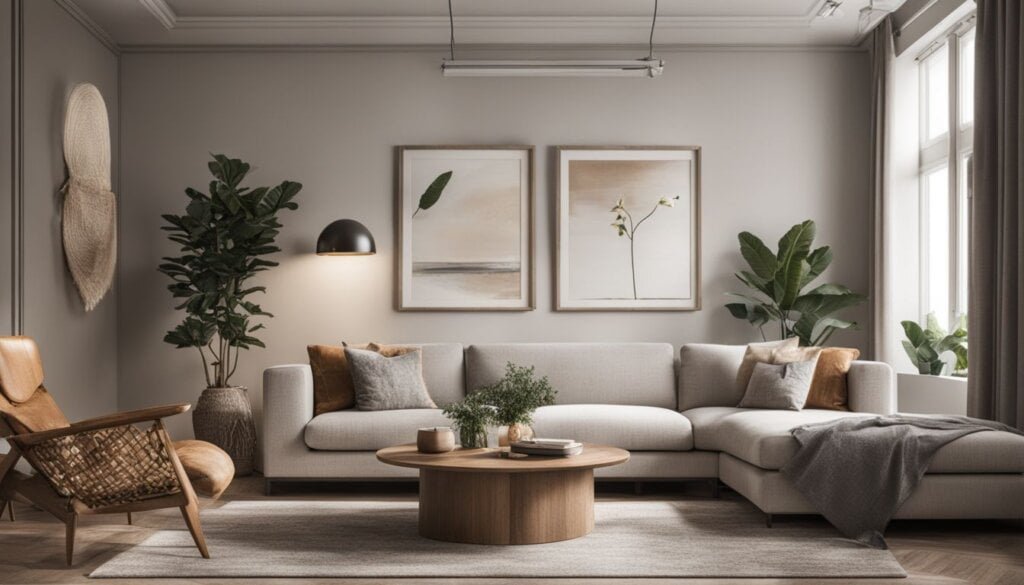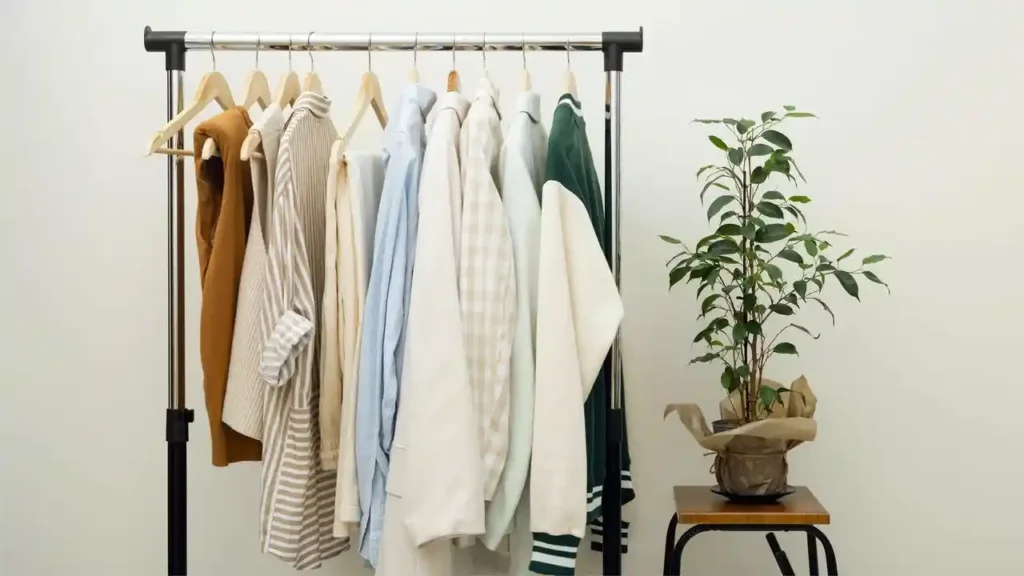You’re curious about minimalism. You wonder if it’s just about having fewer things or if there’s more to it. Truth is, minimalism isn’t just a trend; it has roots in ancient philosophy.
So is minimalism a philosophy? Answer is yes! Buddhism and Stoicism, for example, have long preached the virtues of living simply and focusing on what truly matters – the very esssence of minimalism as we all know today.
In this exploration, we will unveil that minimalism is indeed a philosophy – a way of life embracing simplicity, intentionality, and detachment from material possessions. It teaches us to value experiences over things, seeking happiness in the essentials rather than the excesses.
Ready to discover how adopting a minimalist lifestyle can transform your life? Keep reading.
Key Takeaways
- Minimalism is guided by old philosophies like Stoicism and Buddhism, focusing on living simply and finding happiness inside rather than through things.
- It’s about making intentional choices, valuing quality over quantity in everything from clothes to activities, leading to a life with less stress and more freedom.
- Decluttering your space and choosing fewer possessions can help reduce expenses, simplify cleaning, and support the environment by producing less waste.
Is Minimalism A Philosophy? Tracing the Roots of Minimalism: A Philosophical Journey
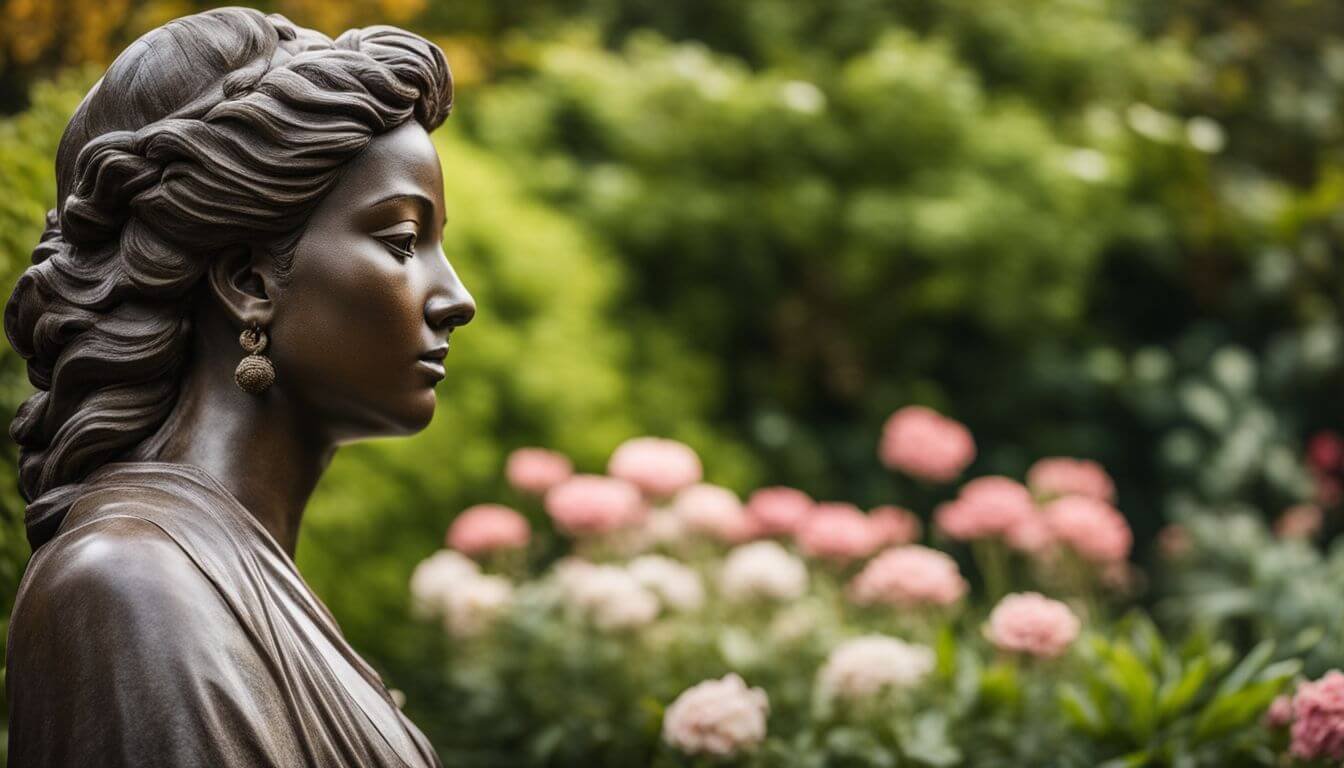
Minimalism starts with old Greek thinkers like the Stoics. They taught that happiness comes from inside, not from things we own.
Stoic Influences on Minimalist Thought

Stoics, a group of ancient Greek philosophers, taught that happiness comes from accepting the moment as it is, not from wealth or possessions. They influenced minimalism deeply. Stoics believed in living with less to focus on what truly matters—wisdom, community, and inner peace.
They saw unnecessary desires as distractions that could lead to unhappiness.
For you, adopting stoic teachings means choosing simplicity over complexity in your life and things. It’s about finding contentment with what you have rather than always wanting more.
This way of thinking helps declutter not just your home but also your mind. By reducing physical clutter, you make room for focusing on personal growth and relationships.
Next up: What defines minimalism…
Exploring the Core of Minimalism
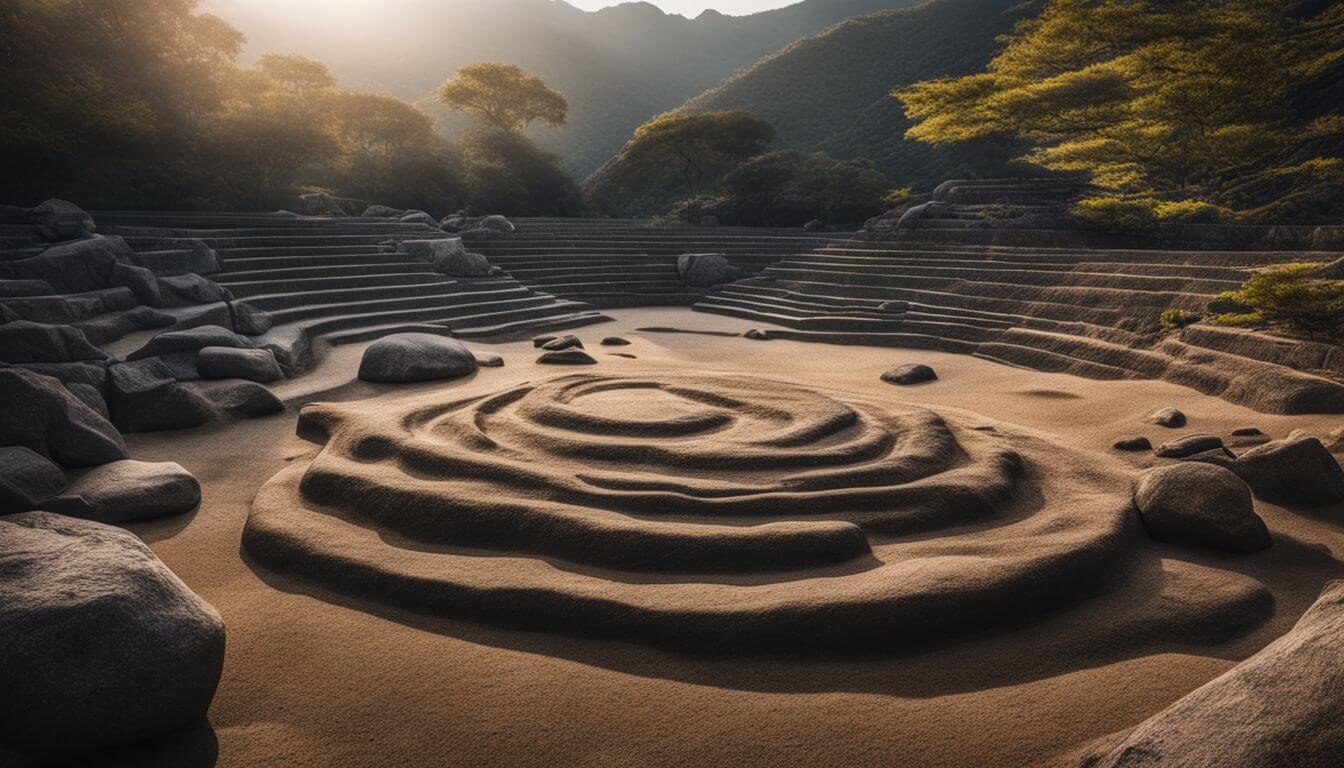
Minimalism is all about choosing less to have more freedom. It asks you to focus on what matters by cutting back on stuff—thinking hard about each thing you own or do. Keep life simple, cut out clutter, and live with purpose.
Want to learn how? Read on!
Also Read: https://greentechwise.com/comparing-minimalist-lifestyle-vs-maximalist-lifestyle/
What Defines Minimalism?
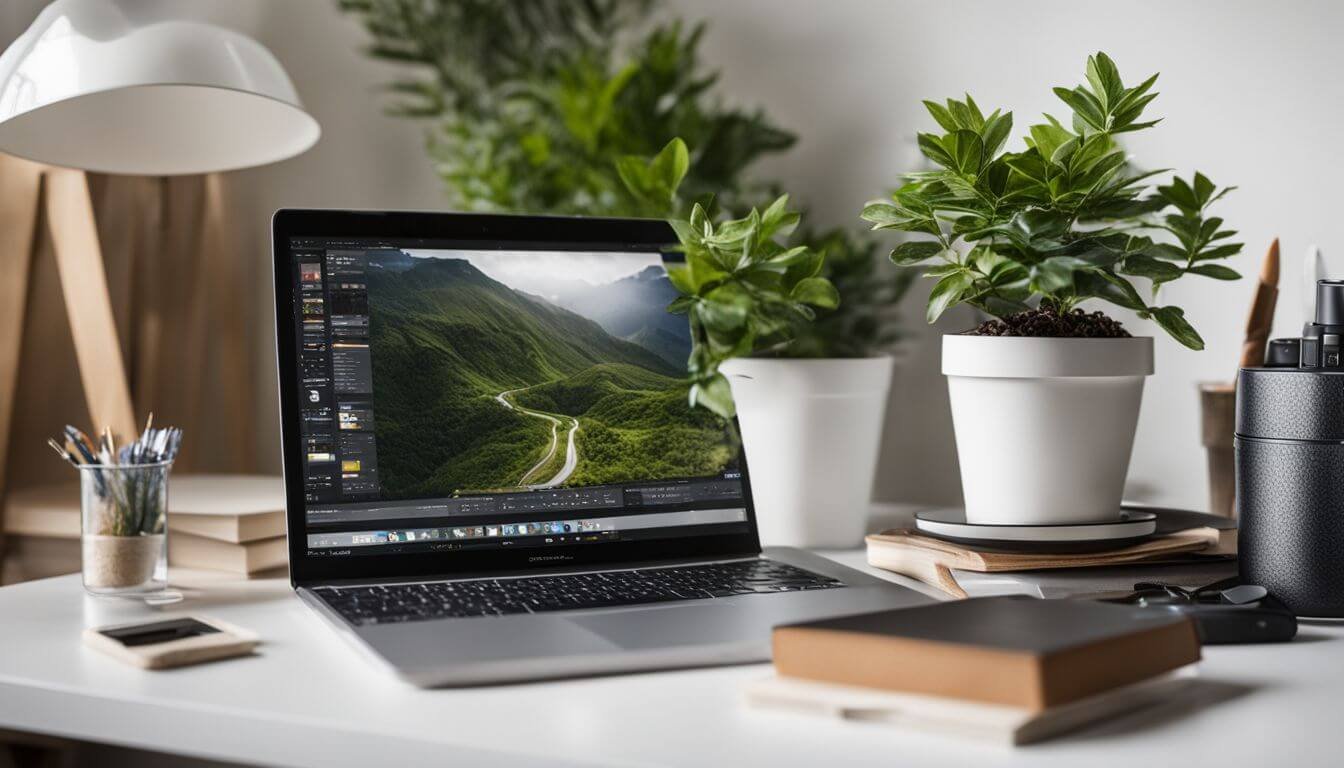
You might wonder what lies at the core of minimalism. It’s about choosing to live with fewer items that matter most. This approach cuts down on clutter, both physically and mentally.
You focus on essential possessions, simplifying your spaces and life. By doing this, you make room for activities and relationships that truly bring joy.
At its heart, minimalism is all about intentional living – selecting quality over quantity in all aspects. Whether it’s your wardrobe or how you spend time, each choice reflects a deliberate decision to value substance over excess.
For example, adopting a minimalist lifestyle could mean having three versatile outfits instead of a closet full of clothes rarely worn. It’s about embracing experiences like meaningful conversations and outdoor adventures over acquiring more stuff.
Minimalism teaches us the power of saying no to unnecessary things so we can say yes to what really matters: well-being, freedom, and sustainability.
Fundamental Principles
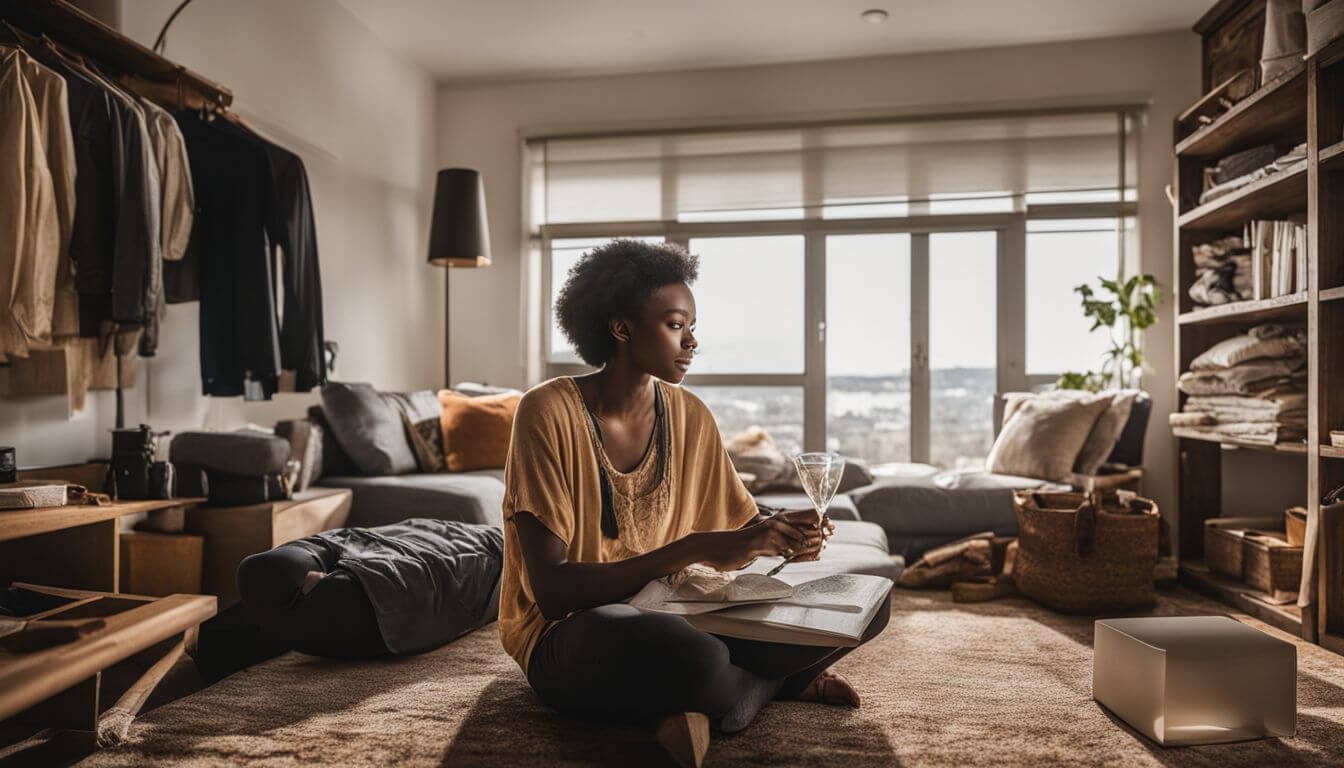
Minimalism is all about living with less. This idea means choosing only what adds value to your life. By doing so, you focus on what matters most and let go of the rest. It’s like decluttering your closet but for every aspect of your life.
Imagine having just enough – nothing more, nothing less.
Living simply helps you make space for things that are truly important. You learn to live intentionally, picking activities and possessions that bring real joy and purpose. This way, each choice you make reflects your true values and goals, making room for a richer life experience with fewer distractions.
Embrace Intentionality

To live with intention means to choose your stuff and commitments carefully. You pick things that matter most and set aside what doesn’t add value. Think about using a simple phone instead of the newest smartphone if it fits your life better.
Or choosing books that change how you think over having many unread on the shelf.
For example, in minimalist living, every item in your tiny house serves a purpose or brings joy. It’s like editing your life’s story – keep only what drives the plot forward. This approach helps save money and reduce waste, supporting a less is more lifestyle.
By focusing on essentials – fewer but meaningful possessions, you make room for freedom and clarity in thoughts and actions.
Also Read: https://greentechwise.com/how-to-design-your-own-minimalist-bohemian-living-room/
The Quest for Detachment

Living with intention leads you straight to seeking detachment. You want to break free from things that tie you down. Detachment is about finding peace in having less. It means letting go of extra stuff, the clutter that fills your home and mind.
This journey involves stripping away layers of material possessions to reveal what’s truly important.
Buddhist philosophy teaches us to detach from desires that cause suffering. In minimalism, this teaching helps you focus on essentials – things that add real value to life. By choosing a simpler path, you say no to consumer behaviors driven by constant wanting more.
Instead, embrace practices like meditating and living off-the-grid for a while, aiming for a life where less is indeed more. These actions clear the noise and help you cherish moments over materials.
The Evolution and Essence of Minimalism

Minimalism has grown from simple ideas about living with less to a whole way of thinking. It’s like seeing things in a new light, focusing on what really matters—choices made with purpose, not just for the sake of having more.
Viewing Minimalism as a Mindset

Seeing minimalism as a mindset means choosing to live with less on purpose. You focus on what matters most and cut out the rest. This way of thinking shifts how you see your belongings, time, and decisions.
It’s not just about having fewer things; it’s also about making room for more freedom, joy, and peace in your life.
You start by asking yourself if each item adds value to your life. If it doesn’t, you let it go. This applies to everything from the clothes in your closet to how you spend your time off the grid or working remotely.
By adopting this mindset, every choice you make – big or small, becomes more intentional. The result? Your life reflects what’s truly important to you, leading to greater fulfillment and less stress.
The Role of Purposeful Choices

In minimalism, every choice matters. You choose to live with less so you value more. By selecting fewer items for your home, you create a space that reflects what’s truly important.
This means saying no to fast fashion and yes to a minimalist wardrobe with pieces that last longer and mean more.
Making purposeful choices also leads you to rethink how you spend your time. Instead of scrolling through social media platforms for hours, you might meditate or read—a switch from passive consumption to active engagement.
These decisions don’t just save money; they enhance the quality of life by focusing on experiences over possessions.
The Advantages of Adopting Minimalism

Choosing to live with less can change your life in big ways. You’ll find yourself saving money and feeling less stressed, all while keeping your space clean and enjoying more freedom.
Reduce Expenses

Living a minimalist lifestyle helps you cut costs. You buy fewer things, focusing on what truly matters. This means spending less money on unnecessary items and more on experiences or savings.
For example, instead of buying trendy clothes often, you invest in a few quality pieces that last longer. The same goes for furniture and gadgets. By choosing quality over quantity, you save money in the long run.
Minimalism also cuts down on utility bills and maintenance costs. Fewer electronics mean lower electricity bills. Minimalist homes are easier and cheaper to clean and maintain because there’s less clutter to deal with.
You’re not just saving money; you’re investing it wisely in areas that improve your life quality without breaking the bank.
Minimize Stress
Choosing a minimalist lifestyle brings peace to your mind. You cut down on clutter, both physically and mentally. Your home has less stuff, so you worry less about cleaning and organizing.
This means more time for hobbies and relaxation—activities that lower stress levels. You also stop chasing after the latest gadgets or fashion trends, which reduces anxiety about keeping up with others.
Your budget benefits too. Less spending on unnecessary items frees up cash for savings or experiences that make you happy, not stressed. Minimalists focus on quality over quantity in everything from clothes to entertainment, leading to greater satisfaction with what they have.
Say goodbye to the pressure of consumerism and hello to a calmer life where you enjoy the simple joys without feeling overwhelmed by possessions or debt.
Simplify Cleaning
After cutting down stress, you’ll find cleaning becomes easier with minimalism. With fewer items in your home, there’s less to clean. This means you spend more time doing what you love instead of tidying up.
Imagine having just the essentials, each with its place. You wipe surfaces faster and vacuum in no time because there’s less clutter blocking your way.
Living simply also means choosing furniture and decorations that are easy to keep clean. Opt for designs that don’t trap dust or require special care. This approach not only saves effort but also encourages a cleaner living space by design.
Enhance Freedom
By choosing minimalism, you gain more freedom. This lifestyle cuts down on your possessions and commitments. With fewer things, you spend less time cleaning and organizing. More money is in your pocket because you buy less.
You live simply, focusing on what truly matters to you.
Minimalism leads to a life off-the-grid or closer to it, making choices that are good for the environment. Think about using solar panels instead of relying only on traditional power sources.
Grow your own food in a tiny house garden. You make space for nature and reduce harm to the earth by consuming less. This way, every action supports a freer, more sustainable life.
Environmental Benefits
Minimalism helps the planet a lot. By owning less, you cut down on waste. This means fewer things end up in landfills. Choosing simple lives and tiny houses uses less energy. Less energy use lowers climate change effects.
You help save natural resources too.
You also support a circular economy by recycling more and buying less new stuff. This action reduces over-consumption and economic growth that hurts our planet. Minimalism teaches to value what we have, which leads to less waste and more recycled materials being used wisely.
Contrasting Minimalism and Consumerism

While minimalism tells you to hold on tight to what matters, letting go of the rest. Whereas consumerism pushes you to grab more, even if it fills your life with clutter.
The Anti-consumerist Nature of Minimalism
Minimalism stands against buying too much. It says no to the endless cycle of getting more stuff. This lifestyle teaches you to find joy in less, making each choice matter. By choosing quality over quantity, you save money and reduce waste.
This path leads to a life not defined by possessions but by experiences and relationships.
This lifestyle also helps the earth. Fewer things mean less trash and fewer resources used up. Brands like The Minimalists show how living with less can give you more freedom, happiness, and peace.
They prove that a simple life is rich and full without extra things cluttering it up. This way of life is about breaking free from consumerism’s grip, focusing on what truly adds value to your days.
Rejecting Materialism
You choose to live with less. This means saying no to endless buying and yes to more meaningful things. Rejecting materialism isn’t just a choice; it’s a stand against the constant push to own more.
You focus on what matters—relationships, experiences, growth—not just stuff. By choosing fewer but better quality items, you break free from the cycle of buy-use-throw away. This way, you save money and reduce waste.
Your life becomes simpler, cleaner.
This shift leads you down a path away from cluttered spaces and cluttered minds. You start seeing clear differences between need and want. Every item in your minimalist lifestyle must earn its place for its purpose or joy it brings.
The quest for simplicity goes beyond possessions—it touches how you manage time, commitments, even digital spaces.
Now let’s explore steps to becoming a minimalist…
Adopting a Minimalist Lifestyle

Steps to Becoming a Minimalist
Minimalism is a path to finding freedom and happiness by owning less. It’s about making space for what truly matters.
Here are steps you can take to embrace this simple living philosophy in your life:
- Understand the core of minimalism. Read about ancient philosophies like Buddhism that inspire minimalism. Notice how they emphasize simplicity and the rejection of mass consumerism.
- Evaluate your possessions. Go through everything you own and ask if it adds value to your life. Keep only what you need or love.
- Set clear goals for your minimalist lifestyle. Decide what you want from minimalism, whether it’s more money, freedom, or less stress.
- Start decluttering room by room. Begin with easy spaces like the bathroom and progress to harder areas such as the wardrobe.
- Learn to say no to things that don’t add value. This includes unnecessary purchases and activities that drain your time and energy.
- Practice mindfulness in consumption. Before buying something new, wait 30 days to see if you still want it.
- Adopt a minimalist wardrobe. Choose clothes that mix and match well, reducing the need for many outfits.
- Digitize where possible to reduce physical clutter. Scan documents, use digital books, and manage finances online.
- Embrace experiences over things. Spend money on activities that create memories rather than objects that fill space.
- Simplify your schedule by choosing commitments that align with your values and saying no to those that don’t.
Next, let’s clarify some common misconceptions about minimalism…
Changing Perspective
After learning the steps to becoming a minimalist, you’ll see things differently. You start seeing your choices – like what you buy or how you spend time as important. Each choice either adds value or clutter.
To change perspective means to pick things with purpose and think about what truly matters.
For example, imagine choosing between keeping 10 good books or 100 that just sit there. Or deciding to spend time with friends over scrolling through social media for hours. It’s all about trading quantity for quality in everything—things, relationships, activities.
This shift in thinking is key in de-growth and living off-the-grid lifestyles where every resource counts. By adopting this mindset, you focus on noble truths and seek freedom from the endless cycle of wanting more.
What are some strategies for decluttering?
Why Decluttering? Because decluttering frees up space and reduces stress. It creates a minimalist home, echoing the principles of essentialism and simplicity.
Here are some effective strategies:
- Start with one room – Focus on clearing out one area before moving to the next. This method prevents feeling overwhelmed.
- Use the 12-12-12 challenge – Find 12 items to throw away, 12 to donate, and 12 to be returned to their proper place.
- Practice the four-box method – Label boxes as trash, give away, keep, or relocate. This helps sort items efficiently.
- Set time limits for decluttering tasks – Work in short bursts of 15–30 minutes to maintain focus and avoid burnout.
- Take before and after photos – Visual progress motivates you to continue decluttering other areas.
- Apply the one-year rule for clothing – If you haven’t worn an item in a year, it’s time to donate or sell it.
- Digitize sentimental items – Scan photos and important documents to reduce physical clutter while keeping memories intact.
- Implement a one-in-one-out policy – For every new item brought into your home, remove an old one to maintain balance.
- Schedule regular decluttering sessions – Make it a routine every few months to prevent accumulation of unnecessary items.
- Question each item’s purpose – Keep only what serves you well or brings joy, aligning with the minimalist attitude towards possessions.
- Donate books you’ve already read or won’t read again – Share knowledge with others and clear space on your shelves.
- Sell unused electronics and gadgets – Modern life accumulates technology quickly; selling them off can also provide extra cash.
- Opt for multi-functional furniture in tiny houses – This maximizes utility without sacrificing style or comfort.
These steps guide you through simplifying your living space, mirroring minimalist philosophies like those from ancient Greek schools of thought and Buddhism which emphasize detachment from material excess for a more conscious lifestyle.
Creating a Minimalist Wardrobe
After decluttering your home, focus next on creating a minimalist wardrobe. This means keeping clothes that fit well, look good on you, and serve multiple purposes.
- Choose quality over quantity. Opt for a few high-quality pieces rather than many low-quality items.
- Stick to neutral colors. They mix and match better, making more outfits with fewer pieces.
- Apply the one-in-one-out rule. If you buy a new item, let go of another to avoid clutter.
- Use versatile clothing pieces. Items like plain t-shirts and jeans work in many outfits.
- Keep your wardrobe size manageable. Aim for 30-50 pieces including shoes and outerwear.
- Invest in timeless styles instead of fast fashion to avoid constant updates.
- Organize your closet space wisely to see everything you have at a glance.
- Consider the tiny house movement approach: less space, fewer but cherished clothes.
- Embrace off-grid living values by choosing sustainable brands that align with minimalist beliefs.
- Experiment with a capsule wardrobe for each season to simplify decisions and storage.
By focusing on essentials and leaving trends behind, you tailor your wardrobe to fit a simpler lifestyle while still enjoying fashion and personal expression.
Read More: https://greentechwise.com/10-essential-tips-for-building-your-minimalist-wardrobe/
Safeguarding Time
Use a planner to block out hours for tasks. It helps you see how much time each activity takes. Set limits on phone and internet use during work or study times. This cuts distractions, making sure you stay focused.
Try tools like apps that lock your phone for set periods or sites that track how long you spend online.
Next, look into decluttering strategies to make your space as simple as your schedule. This means getting rid of things you don’t need and organizing what’s left in a way that makes sense to you.
Clarifying Common Misconceptions About Minimalism

Some folks think minimalism means boring or sad. But, the truth is it lets you find joy and value in less.
Minimalism Does Not Ensure Happiness
Minimalism is a choice, not a guarantee for happiness. Just because you choose to live with fewer things doesn’t mean joy automatically follows. You might find yourself owning less but feeling the same.
This lifestyle focuses on what matters most, but it’s up to you to find fulfillment in those choices. The truth behind minimalism’s roots shows us that simplicity can lead to contentment, yet it’s personal effort and mindset that truly determine happiness.
Choosing this path requires more than just getting rid of stuff—it means looking at life differently and making space for experiences over objects. Even ancient philosophies like Buddhism reflect on this idea; however, they also emphasize that inner peace comes from within, regardless of external simplicity or abundance.
Next, let’s explore why minimalism is often misunderstood as being monotonous.
Minimalism Is Not Monotonous
Living with less does not mean your world turns dull. Each choice to keep things simple lets you find rich experiences and deep joy in what truly matters. For instance, by choosing a minimalist wardrobe, you invite creativity into your daily routine.
You mix and match fewer pieces to create new looks. This simplicity pushes you to think outside the box.
Your space becomes a canvas for meaningful objects, not cluttered shelves full of forgettable items. Every piece in a minimalist home tells a story, from abstract expressionism art that stirs the soul to essential furniture that combines form and function.
In this lifestyle, quality beats quantity every time. So, embrace minimalism and watch how it colors your life with vibrancy and purpose.
Valuing Sentimentality
Minimalism values the deep feelings tied to personal items more than you might think. It’s not about getting rid of everything with a story or memory attached. Instead, it encourages keeping things that truly mean something to you – like family heirlooms or gifts from loved ones.
This approach makes sure every item in your minimalist space has its own purpose and value. Choosing what stays involves considering if an object brings joy, serves a need, or holds significant emotional value.
Next, consider how this mindset spills over into making purposeful choices beyond just physical objects.
Connecting Minimalism with Diverse Philosophical Theories

Linking minimalism with different thought systems opens a vast field. From Plato’s cave story to Socrates’ questioning, and touching on more complex ideas like nothingness and fate vs. choice, it shows minimalism’s depth.
Go deeper into how this simple lifestyle ties to big thinking.
Insights from Plato’s Allegory of The Cave
Plato’s Allegory of The Cave shows you how people can think shadows on a wall are the real world. Imagine living in a dark cave, where all you see are shadows made by things outside the cave.
You might believe these shadows are everything that exists. Plato suggests there is more out there – a brighter truth beyond what we see. This story encourages you to seek deeper truths and question what seems obvious.
In relation to minimalism, this allegory pushes you to look past material possessions – the “shadows.” It asks you to find value in experiences, relationships, and self-growth instead of collecting items.
By focusing on what truly matters, just as philosophers like Socrates urged us to examine our lives, minimalism helps peel back layers of consumerism to reveal a simpler and more meaningful life beneath.
Applying the Socratic Method
The Socratic Method teaches you to ask deep questions. This way, you find what truly matters in life. Imagine asking yourself why you keep certain things. You might realize you don’t need as much as you think.
Minimalists use this method to focus on essential values, not just stuff.
This approach helps clear clutter—not only in your home but in your mind too. By questioning every item’s purpose, minimalists make room for more meaningful experiences and relationships.
Think of it like cleaning out your inbox; what stays must serve a real purpose or bring joy.
Exploring Nihilism
After discussing how the Socratic Method can sharpen your thoughts, let’s move to nihilism. So what is Nihilism? Nihilism challenges everything you believe about life’s meaning. This idea says life has no purpose, goals, or intrinsic value.
Imagine stepping off-the-grid mentally, where nothing dictates your direction but your own choices.
Nihilism might sound dark at first glance, yet it opens a door. It lets you look at minimalism in a new light. Instead of clinging to things for happiness or identity, nihilism teaches detachment and freedom from material possessions.
Think of Kazimir Malevich’s Black Square—it’s more than just art; it represents breaking free from traditional values to find personal significance in simplicity and space. Here, less truly becomes more as you embrace the essence rather than the excess.
Debating Free Will versus Determinism
You might wonder if your choices are truly yours. This debate between free will and determinism digs deep into that question. Free will suggests you make decisions independently, without outside forces shaping them.
Determinism argues the opposite; every action stems from prior events or laws of nature, making freedom an illusion.
Consider this – When deciding to live off-the-grid or adopt a minimalist lifestyle, is that choice truly yours? Some argue Plato’s allegory of the cave shows people are prisoners to their perceptions, influenced by what they’ve been shown.
Others believe in Kasimir Malevich’s view of minimalist art—where simplicity and intentional choices break free from traditional constraints. These perspectives offer clues on how deep our freedom goes – or doesn’t, in making life’s big decisions.
Conclusion

Minimalism is indeed a philosophy. It’s roots stretch back to ancient philosophies like Stoicism and Buddhism. This way of life teaches you to value simplicity and focus on what truly matters.
By choosing fewer but better things, you can find more happiness and freedom. So yes, minimalism goes beyond just getting rid of stuff – it’s a thoughtful journey towards living with purpose.
FAQs
Is minimalism really a philosophy?
Yes, it is. Born from the Greek school of thought, minimalism teaches you to find happiness in less – think, Joshua Fields Millburn and that allegory of the cave story. It’s about seeing beyond material possessions.
How does living off-the-grid fit into minimalism?
Living off-the-grid? That’s minimalism in action. It means cutting down on excess… like, seriously downsizing your life to what truly matters. You invest more in experiences than things.
Can practicing negative visualization make me a minimalist?
Absolutely! Negative visualization isn’t as grim as it sounds; it’s an exercise from those ancient Greeks again – imagining life without some possessions to value what you have now more deeply… leading you closer to a minimalist lifestyle.
What role do concepts like hygge and degrowth play in minimalism?
Think of hygge and degrowth as cousins to minimalism. Hygge brings comfort and contentment with little; degrowth challenges constant consumption for happier, simpler lives. They all sing the same tune – joy doesn’t come from stuff.


